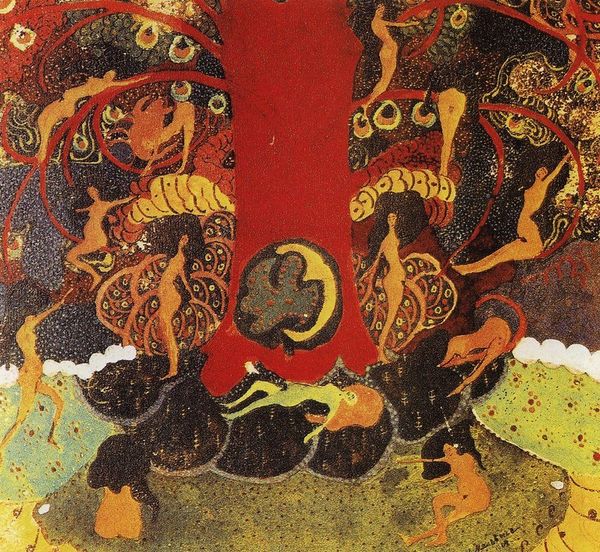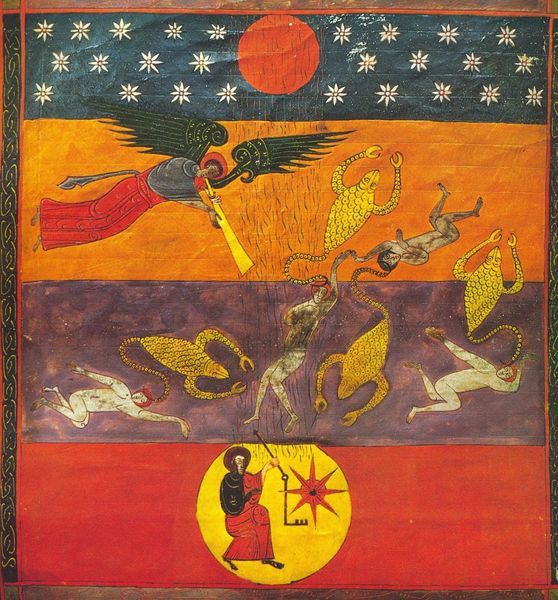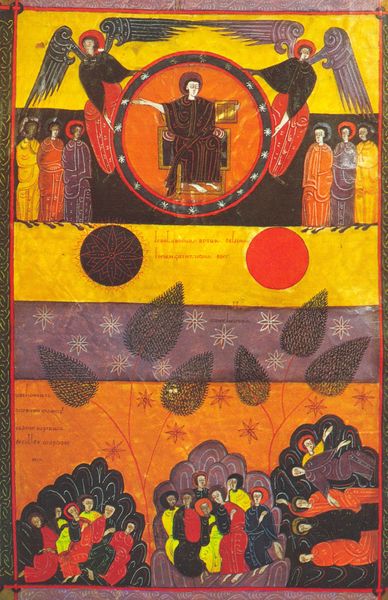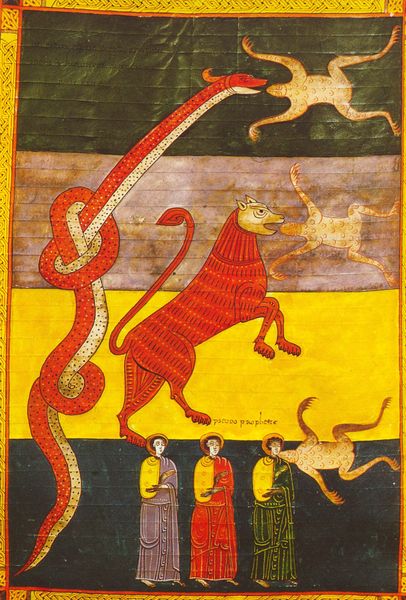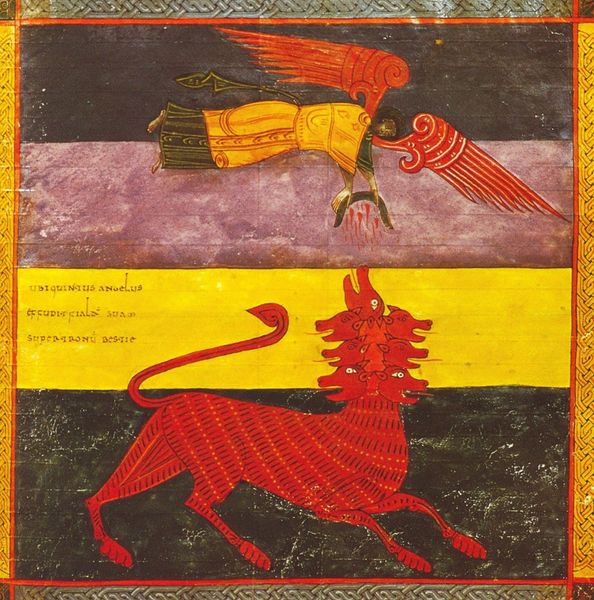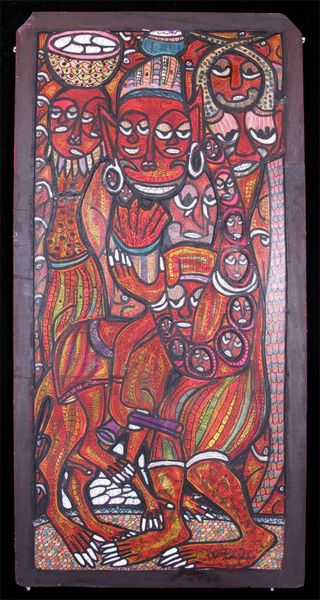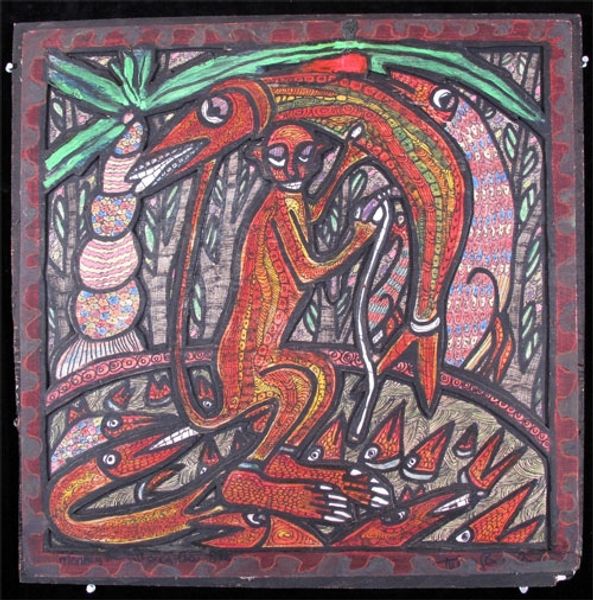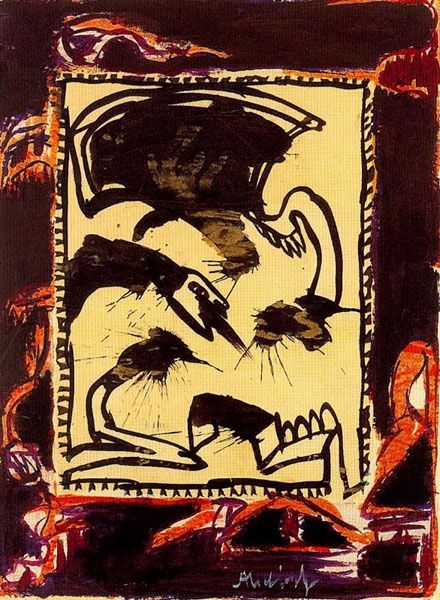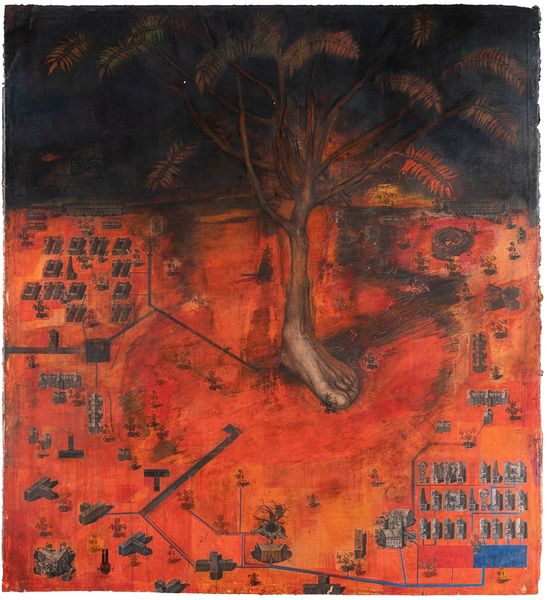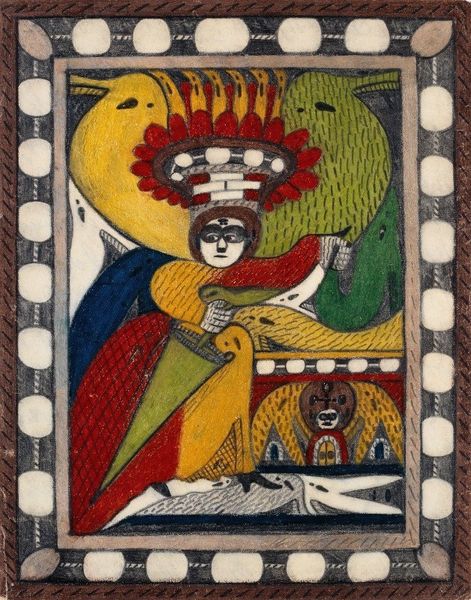
tempera
#
medieval
#
narrative-art
#
tempera
#
figuration
#
naive art
Copyright: Public domain
Curator: What strikes me immediately is the raw, almost visceral energy radiating from this image. The colors are intensely saturated and the forms seem to writhe on the surface. It's chaotic yet there’s a definite compositional logic at play. Editor: Indeed. Here we have "Le Dragon donne sa puissance à la Bête. Apoc. XIII," a tempera painting attributed to Facundus. It’s fascinating how it encapsulates anxieties surrounding religious authority in the Medieval period. Curator: It certainly pulls from familiar wellsprings of religious allegory! We see a dragon with numerous heads bestowing power upon a monstrous beast. Note how the figures floating, almost falling, between them – likely representing souls or believers. They serve as passive conduits of power, highlighting the very hierarchical structures that defined their lives. Editor: Absolutely. The symbolism is layered. The dragon, of course, represents chaos, primordial power, while the beast with multiple heads is clearly a stand-in for earthly, perhaps secular, authority. Consider the deliberate crudeness of the artistic style; its visual impact upon a Medieval viewer, saturated in the doctrines depicted, would have been powerful. Curator: And the color! The bright yellows and oranges offset the stark blacks, further enhancing that dynamic tension. The whole picture reads as a visual embodiment of apocalyptic dread. I can imagine how seeing something like this on display would influence opinions on worldly power. Editor: Right. Art such as this served to solidify certain beliefs and reinforce those in power by emphasizing a clear spiritual reward-punishment binary. Works such as this not only reinforced power structures, but actually performed that function in its contemporary time. Curator: The continued resonance with naive art throughout centuries indicates the effectiveness and resilience of its message. Its accessibility ensures it lives long after those original believers. Editor: The use of such visual metaphors remains pertinent and shapes how cultural narratives persist. Looking closer, perhaps art historians and cultural critics have more in common than one might think.
Comments
No comments
Be the first to comment and join the conversation on the ultimate creative platform.
